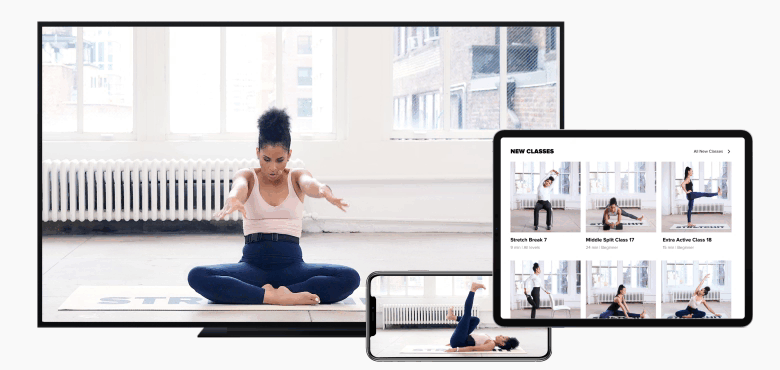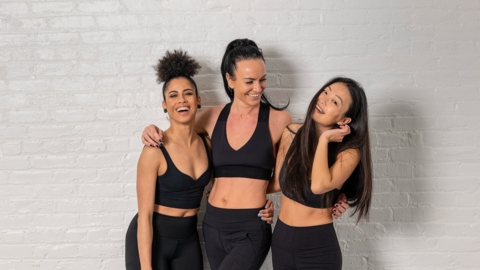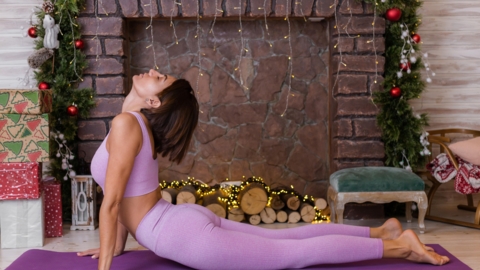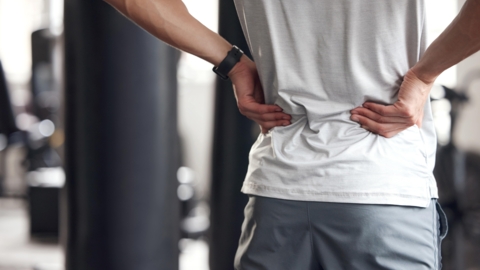A Beginner’s Guide to Straddle Splits
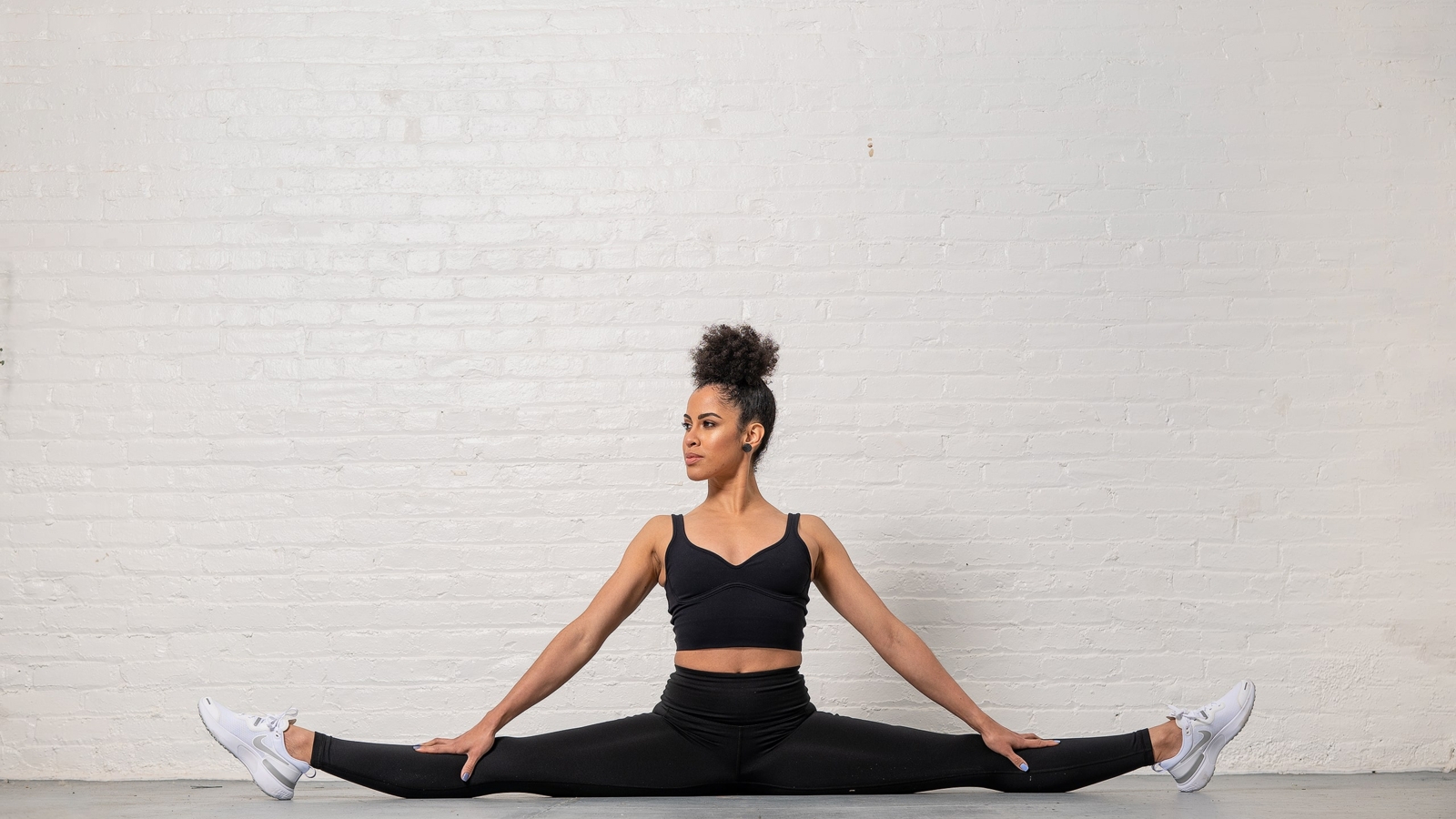
So, you’ve seen our instructors on Instagram casually sitting in a perfect straddle split, and now you’re thinking, “Could I actually do that?”
Well, the answer is yes — eventually.
Like anything worth doing, nailing a straddle split takes time, patience, and the right approach.
But don’t sweat it. Let’s break down what a straddle split is, the muscles you’ll stretch, and how to get started without pulling your inner groin or hamstring.
If you want to achieve your flexibility goals, grab your STRETCHIT app free trial today and get instant access to unlimited flexibility and mobility training programs and classes.
What is a Straddle Split?
First things first—what exactly is a straddle split?
This inner thigh stretch involves sitting on the floor with your legs spread wide apart, forming a wide “V” shape.
In this position, your toes and knees should be pointing upwards towards the ceiling. This upward rotation is important to note because it requires external rotation of the hips.
Unlike a middle split, where the knees and toes typically face forward, the straddle split demands more from your hip flexors and glutes.
This difference in rotation makes the straddle split more challenging for many people, but it's also a fantastic way to develop flexibility and strength in the hips and inner thighs.
If you want to achieve your flexibility goals, grab your STRETCHIT app free trial today and get instant access to unlimited flexibility and mobility training programs and classes.
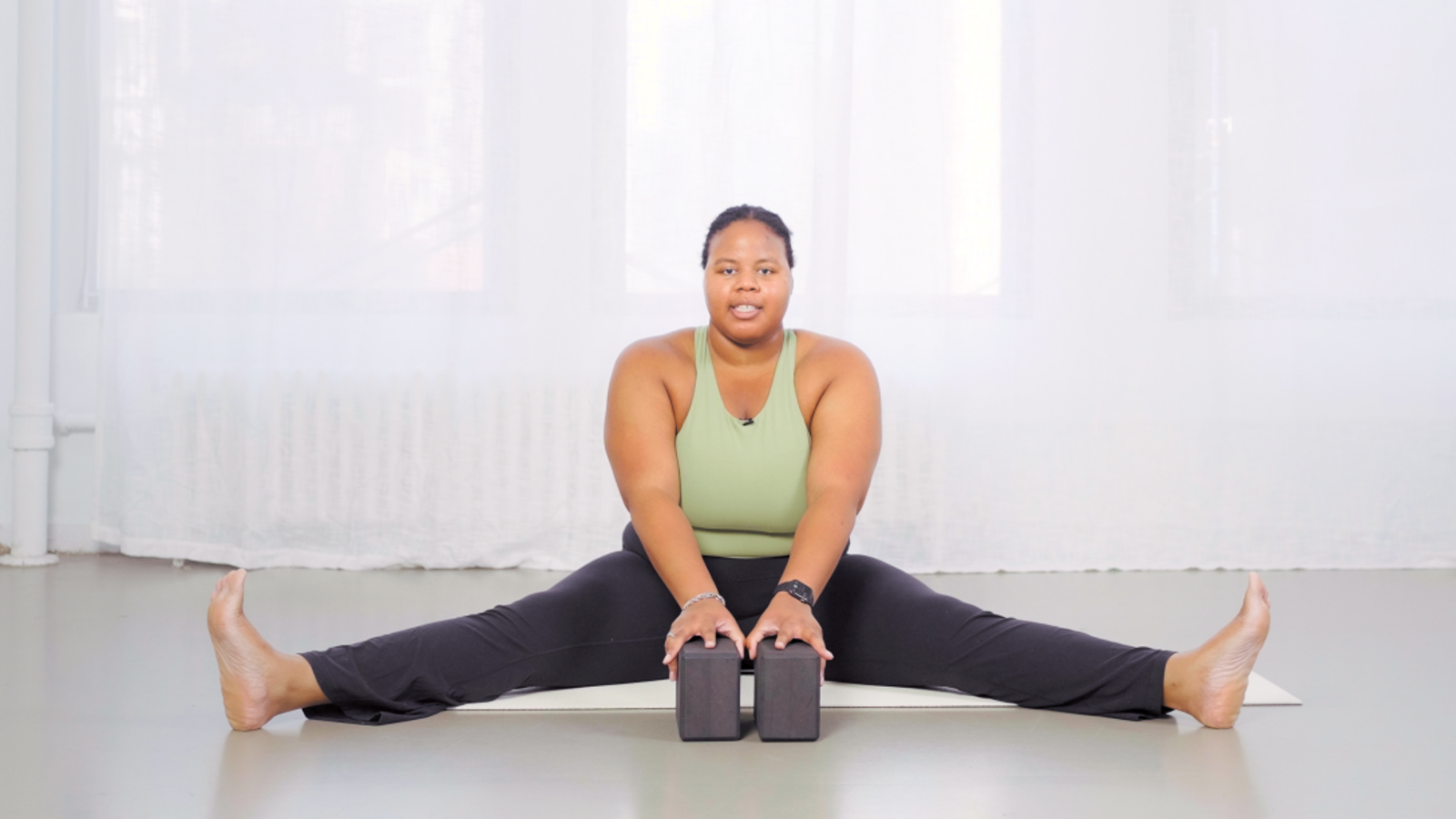
Muscles Stretched
A straddle split isn’t just about getting your legs as far apart as possible (though that’s definitely a goal). It’s a full-on lower body stretch, targeting several key muscles, including:
Hamstrings
These are the muscles along the back of your thighs. In a straddle split, you’ll feel them stretching, especially if you’re working on keeping your back straight.
Adductors
These inner thigh muscles do the heavy lifting (or should we say stretching) in a straddle split. They play a fundamental role for both flexibility and stability.
Hip Flexors
Positioned at the front of your hips, these muscles help create stability during the stretch.
Glutes and Deep Hip Rotators
These muscles assist in externally rotating the hips, allowing your knees and toes to point upwards, which is key for the straddle split.
Straddle vs. Middle Splits – Key Differences
Let’s clear up the confusion: a straddle split and a middle split aren’t the same, and understanding the differences is key to mastering each one.
In a straddle split, you’re sitting on the floor with your legs spread wide, your knees and toes pointing upwards.
This position requires external rotation of the hips, engaging your adductors, hip flexors, glutes, and deep hip rotators.
This demands a greater range of motion in your hip joints.
On the other hand, in a middle split (or center split), your legs extend out to the sides with your knees and toes pointing forward.
This involves less hip rotation and more direct stretching of the adductors and hamstrings.
Because the knees and toes face forward, the middle split is more about lateral (side-to-side) flexibility, while the straddle split challenges both lateral and rotational mobility.
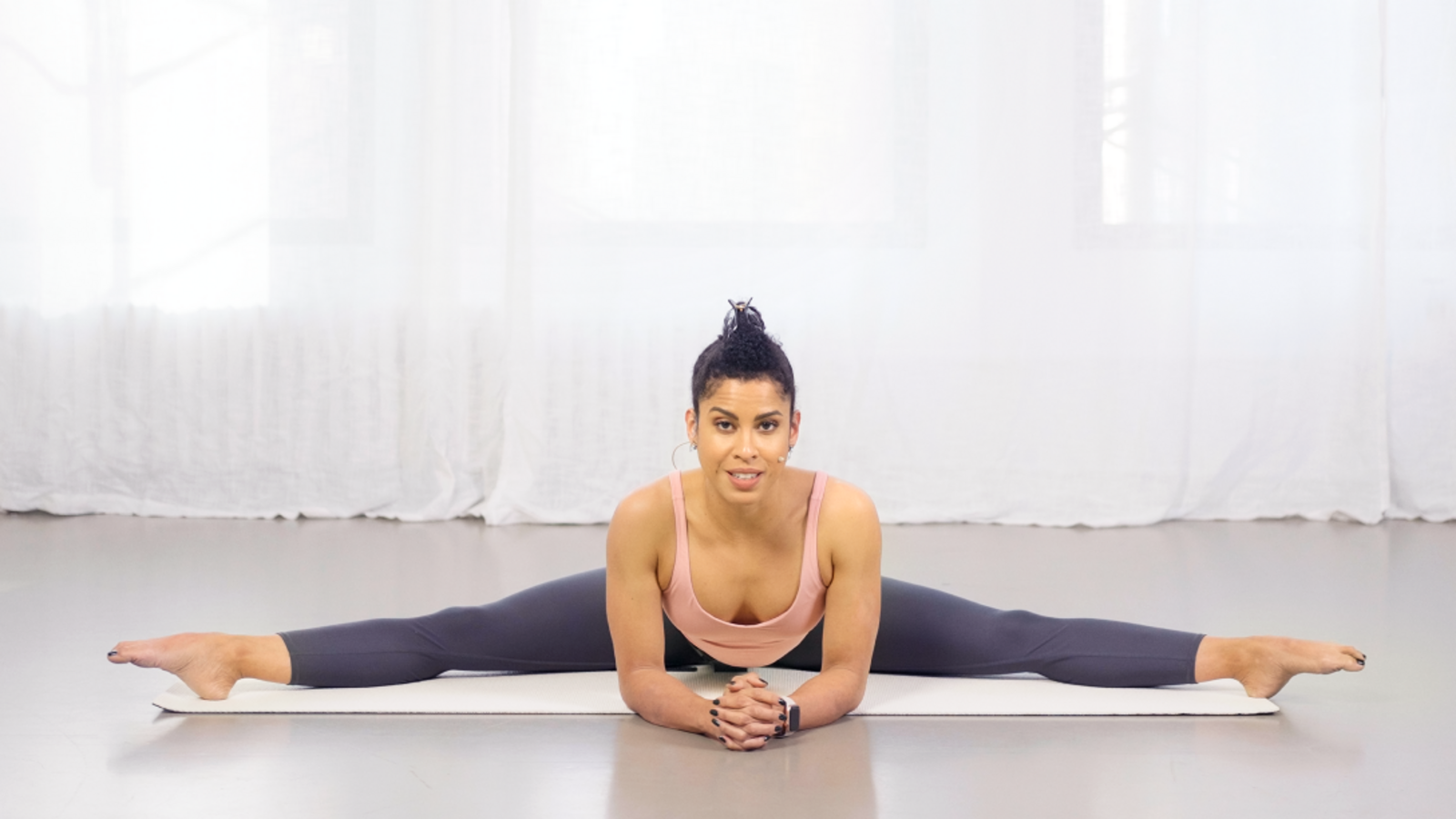
How to Do a Straddle Split
Alright, time to get down to business. Here’s how to start working on your straddle split:
Warm-Up - Never skip your warm-up. Loosen up your hips, hamstrings, and inner thighs with some dynamic stretches like leg lifts or hip circles.
Sit on the Floor - Extend your legs out to the sides in a wide “V” shape. Keep your toes and knees pointing upwards—this is key for proper hip rotation and effective stretching.
Straighten your spine by trying to arch your lower back. If you can't straighten your spine in this position, place a block or a pillow under your butt.
Engage Your Core - This isn’t just about flexibility; strength plays a big role too. Engage your core to help support your lower back and maintain posture.
Breathe - Hold the position for 30 seconds to a minute, breathing deeply and relaxing into the stretch.
Things to Consider
Before you dive into your straddle split practice, keep a few key points in mind:
Focus on Technique
It’s easy to get caught up in trying to get your legs as wide as possible, but proper technique is super important.
Keep your back straight, avoid rounding your shoulders, and focus on form over depth. Quality over quantity.
What Muscles Need to be Flexible?
Flexibility in your hamstrings, adductors, hip flexors, and glutes is essential.
Tightness in any of these areas can make achieving a straddle split difficult and increase the risk of injury.
Regular stretching of these muscles will help improve your range of motion and make the straddle split more accessible.
Common Mistakes to Avoid
Avoid bouncing or forcing your stretch. Not only is this counterproductive, but it’s also a fast track to injury. Instead, ease into your stretch, and remember that progress is gradual.
Another common mistake is neglecting the external rotation of the hips—if your knees start to point forward, you’re not in a true straddle split.
Progress Over Time
Don’t obsess over how close you are to the floor. It’s not about how deep your stretch is on day one but how consistent you are with your practice. Trust me, you’ll get there.
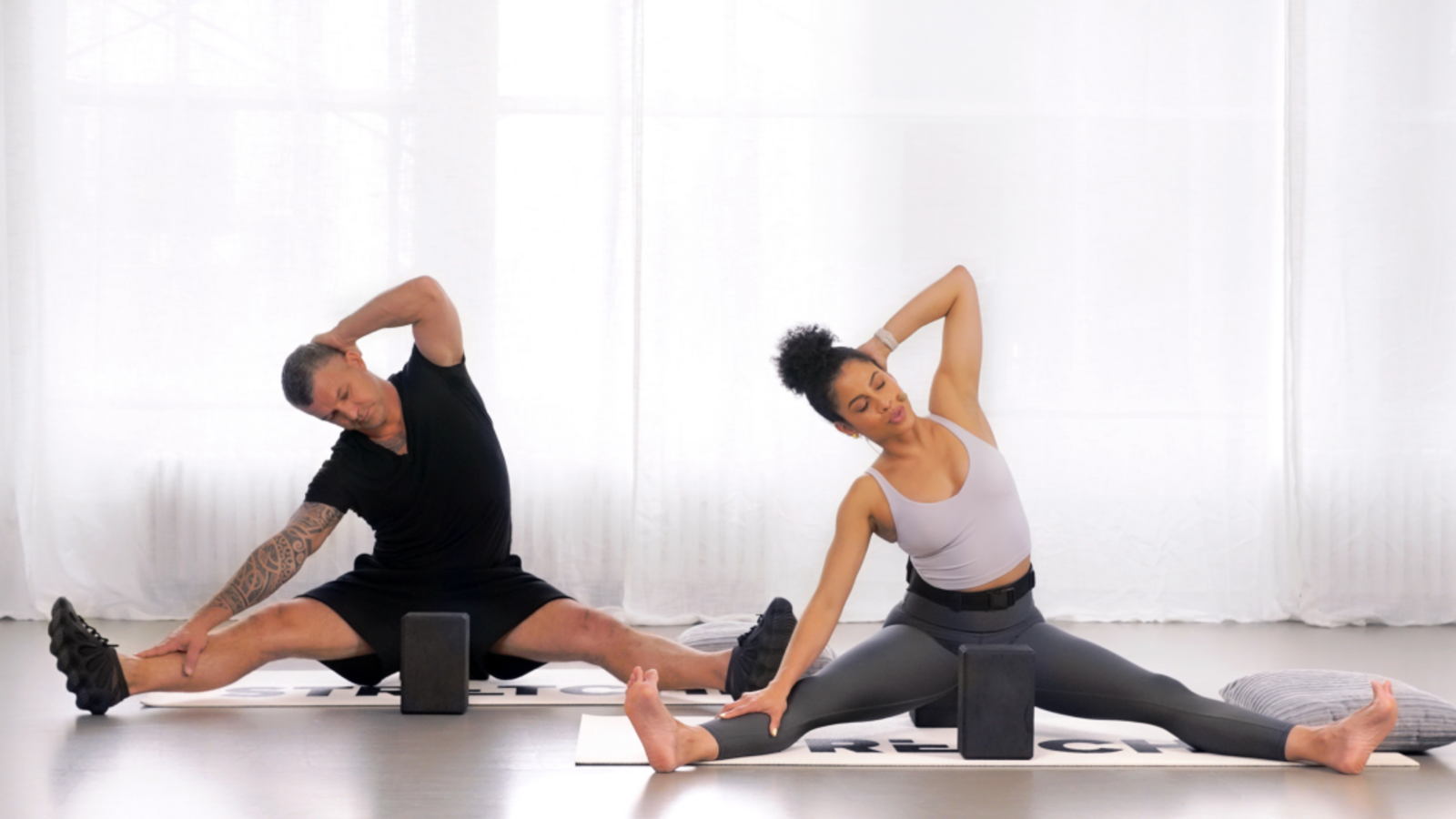
Regression
Not ready for the full straddle split yet? No problem. Try these regression exercises to build up your flexibility:
Elevated Straddle
Sit on an elevated surface like a yoga block or a folded towel. This reduces the intensity and helps ease your way into the stretch.
The elevation helps reduce the strain on your inner thighs and hamstrings, making it a great starting point.
Wall Supine Straddle Stretch
Lie on your back with your legs up against a wall, then let them fall out into a straddle position. Gravity will help deepen the stretch without you needing to engage as much.
This position is particularly helpful for beginners because it allows you to focus on your flexibility without having to support your upper body.
Start on a Chair
Place one leg at a time on a chair and gradually widen your stance. This is great for getting used to that inner thigh stretch. It’s a fantastic way to gently introduce your muscles to the straddle position, especially if you’re dealing with tight hips or adductors.
Horse Stance, Butterfly, and Frog Pose
Horse stance, butterfly stretch and frog pose are perfect for improving inner thigh flexibility and prepping your body for the full straddle split.
The horse stance builds strength in your thighs and hips, the butterfly pose stretches the inner thighs and groin, and the frog pose targets the adductors and helps open up the hips.
Incorporating these into your routine will help improve your overall hip mobility and make achieving a straddle split more attainable.
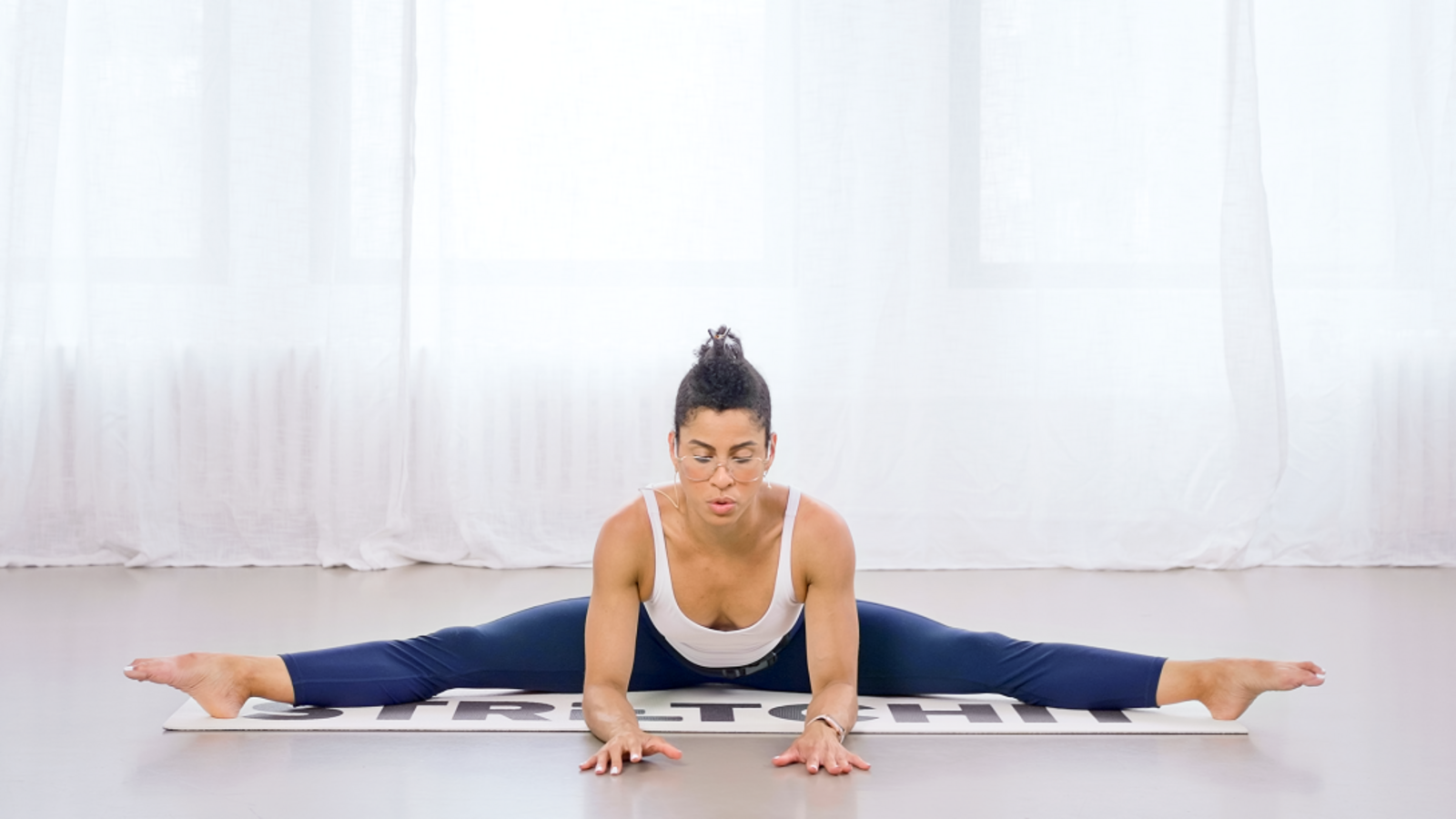
Progression
Once you’ve got the straddle split down, take it up a notch:
Straddle Pancake
From your straddle position, work on bringing your chest towards the floor, keeping your knees and toes pointing up and your back straight.
This is called the straddle pancake, and it significantly increases the difficulty by engaging your lower back, core, and deepening the stretch in your hamstrings and adductors.
The straddle pancake not only requires flexibility but also strength in your core and lower back to maintain proper alignment as you lean forward.
Learn to Straddle Split with STRETCHIT
Mastering the straddle split is about more than just flexibility—it’s about strength, control, and improving your body’s overall performance.
And with the STRETCHIT app, you can make real progress faster and smarter. The app’s guided programs take the guesswork out of stretching, helping you achieve your goals with precision and confidence.
Ready to elevate your flexibility? Download STRETCHIT and start your journey toward mastering the straddle split and beyond.

